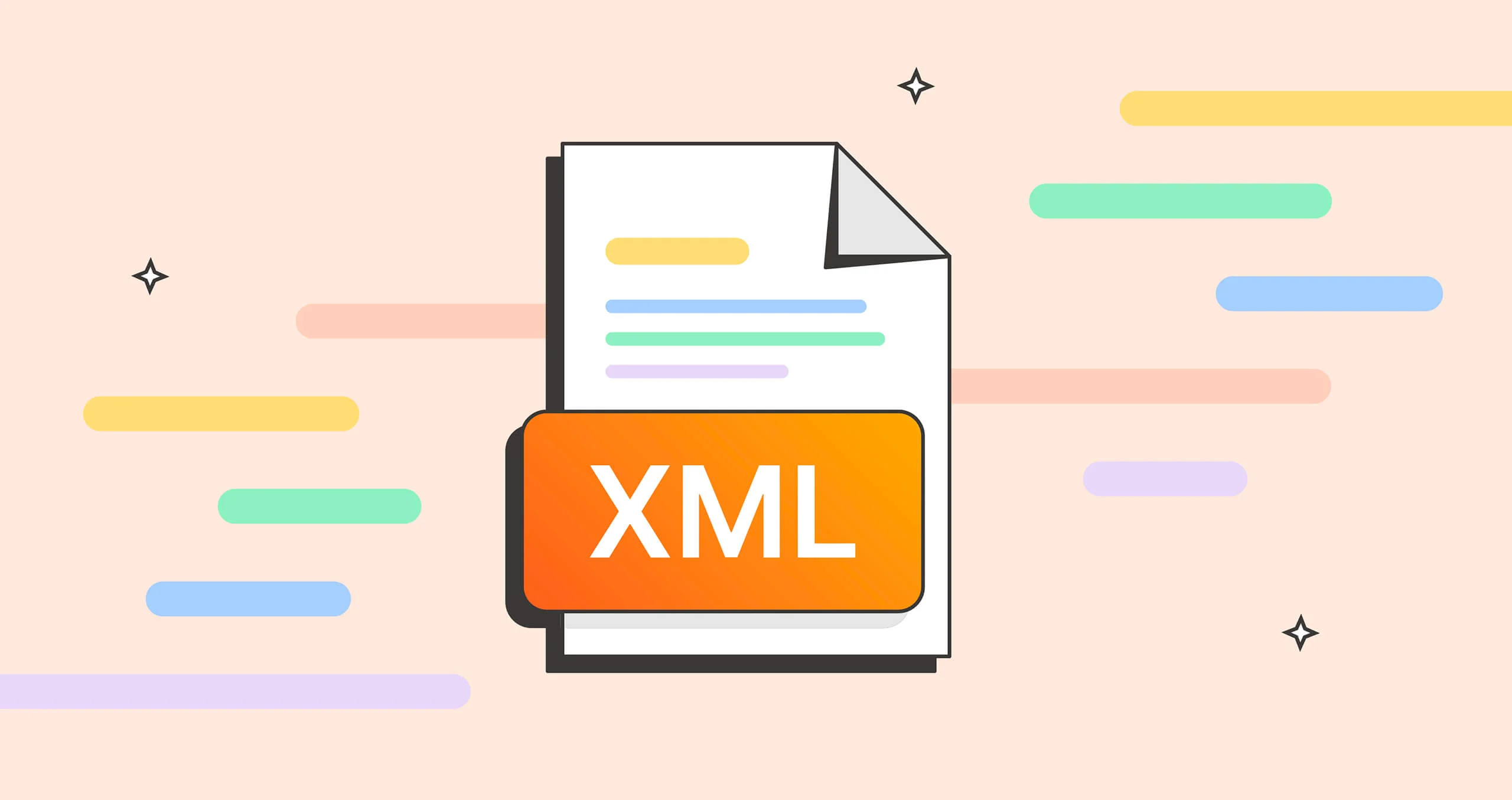XSLT 3.0 introduces major advancements that modernize XML and JSON processing through seven key features: 1. Streaming with xsl:mode streamable="yes" enables low-memory, forward-only processing of large XML files like logs or financial data; 2. Packages via xsl:package support modular, reusable, and versioned code libraries, improving team collaboration and dependency management; 3. Higher-order functions allow functions to be passed as parameters, returned from other functions, and stored in variables, enabling functional programming patterns; 4. Structured error handling with xsl:try and xsl:catch improves robustness when processing unreliable external data; 5. Accumulators provide state tracking during streaming, such as counting elements, without breaking memory efficiency; 6. Full integration of XPath 3.1 maps and arrays allows complex data structures for grouping, lookups, and structured parameters; 7. Native JSON support via parse-json(), json-to-xml(), and xml-to-json() enables direct transformation between JSON and XML, making XSLT viable for modern APIs and microservices. Together, these features make XSLT 3.0 a powerful, functional, and maintainable language for data transformation, especially when using processors like Saxon HE 9.8 .

XSLT 3.0 brings significant improvements over previous versions, making XML transformations more powerful, efficient, and easier to work with—especially in modern processing environments. If you're familiar with XSLT 1.0 or 2.0, the changes in 3.0 aren't just incremental; they represent a shift toward functional programming, better modularity, and tighter integration with other standards like XPath 3.1 and XQuery.

Here’s what’s new and useful in XSLT 3.0:
1. Streaming with xsl:mode streamable="yes"
One of the biggest limitations of earlier XSLT versions was memory usage. Processing large XML files often required loading the entire document into memory, which could be a dealbreaker for big data.

XSLT 3.0 introduces streaming support, allowing you to process XML documents in a forward-only, low-memory way.
- Use
xsl:modewithstreamable="yes"to define streaming templates. - Only certain XPath expressions are allowed in streaming mode (e.g., no backward axes like
preceding-sibling). - Ideal for log files, financial data, or any large XML feed.
Example:
<xsl:mode streamable="yes"/>
<xsl:template match="record">
<output>
<xsl:value-of select="@id"/>
</output>
</xsl:template>This lets you process gigabytes of XML without running out of memory—huge for enterprise ETL pipelines.
2. Packages and Modular Development (xsl:package)
XSLT 3.0 introduces packages—a way to organize, reuse, and version XSLT code across projects.
- Use
xsl:packageto define a reusable module. - Packages can import other packages, declare dependencies, and encapsulate functionality.
- Supports versioning and namespaces for better dependency management.
This is especially useful in team environments or when building libraries of common transformations.
Example:
<xsl:package name="my:utils" package-version="1.0">
<xsl:function name="my:format-date">
<xsl:param name="date"/>
<xsl:sequence select="format-date($date, '[D01]-[M01]-[Y0001]')"/>
</xsl:function>
</xsl:package>You can now build and share XSLT "libraries" like in any modern programming language.
3. Higher-Order Functions and Function Items
XSLT 3.0 treats functions as first-class values. You can pass functions as arguments, return them from other functions, and store them in variables.
- Use
function()syntax to declare function types. - Enables functional programming patterns like mapping, filtering, and reducing.
Example:
<xsl:variable name="doubler" as="function(xs:integer) as xs:integer"
select="function($x) { $x * 2 }"/>
<xsl:sequence select="$doubler(5)"/> <!-- returns 10 -->You can now write generic templates that accept transformation logic as a parameter—great for code reuse.
4. Improved Error Handling with xsl:try / xsl:catch
Before XSLT 3.0, error handling was limited. Now you can use structured exception handling.
- Wrap risky code in
xsl:try. - Use
xsl:catchto handle specific or general errors.
Example:
<xsl:try>
<xsl:copy-of select="doc('external.xml')"/>
<xsl:catch>
<error>Failed to load document: <xsl:value-of select="." /></error>
</xsl:catch>
</xsl:try>This makes your transformations more robust when dealing with external resources or unreliable data.
5. Accumulators: Replace Global Variables in Streaming
Accumulators let you gather information as you process a document—like counting elements or tracking state—even in streaming mode.
- Defined with
xsl:accumulator. - Updated as the processor reads the input document.
- Accessible during transformation without breaking streaming.
Example: Count all <item> elements:
<xsl:accumulator name="item-count" initial-value="0"> <xsl:accumulator-rule match="item" select="$value 1"/> </xsl:accumulator>
Unlike global variables, accumulators work in streaming and update incrementally.
6. Map and Array Support (XPath 3.1 Integration)
XSLT 3.0 fully supports maps and arrays from XPath 3.1, enabling complex data structures.
- Maps: key-value pairs (
map { "name": "John", "age": 30 }) - Arrays: ordered sequences (
[1, 2, 3])
Useful for grouping, lookups, or passing structured parameters.
Example:
<xsl:variable name="users" as="map(*)*" select="(
map { 'id': 1, 'name': 'Alice' },
map { 'id': 2, 'name': 'Bob' }
)"/>This brings XSLT much closer to general-purpose programming.
7. Better Integration with JSON
XSLT 3.0 can parse and generate JSON directly using functions like parse-json() and json-to-xml() / xml-to-json().
- Transform JSON input to XML for processing.
- Output results as JSON using
method="json".
Example:
<xsl:template match="/">
<xsl:sequence select="json-to-xml(unparsed-text('data.json'))"/>
</xsl:template>And to output JSON:
<xsl:output method="json"/>
<xsl:template match="/">
<xsl:map>
<xsl:map-entry key="'message'" select="'Hello'"/>
</xsl:map>
</xsl:template>Now you can use XSLT in APIs or microservices that consume or produce JSON.
Final Thoughts
XSLT 3.0 isn’t just “XSLT but faster”—it’s a modern, functional language for XML (and JSON) transformation. With support for:
- Streaming (memory efficiency)
- Packages (modularity)
- Higher-order functions (flexibility)
- JSON and maps (modern data)
- Better error handling (robustness)
…it’s more relevant than ever, even in non-XML-heavy ecosystems.
The catch? Not all processors support XSLT 3.0 yet. But Saxon HE (Home Edition), especially version 9.8 , offers solid support and is free for open-source use.
So if you're stuck on XSLT 1.0 or 2.0, it’s worth upgrading your toolchain and learning the new features. The payoff is cleaner, faster, and more maintainable code.
Basically, XSLT 3.0 feels like the language finally grew up.
The above is the detailed content of XML Transformation with XSLT 3.0: What's New?. For more information, please follow other related articles on the PHP Chinese website!

Hot AI Tools

Undress AI Tool
Undress images for free

Undresser.AI Undress
AI-powered app for creating realistic nude photos

AI Clothes Remover
Online AI tool for removing clothes from photos.

ArtGPT
AI image generator for creative art from text prompts.

Stock Market GPT
AI powered investment research for smarter decisions

Hot Article

Hot Tools

Notepad++7.3.1
Easy-to-use and free code editor

SublimeText3 Chinese version
Chinese version, very easy to use

Zend Studio 13.0.1
Powerful PHP integrated development environment

Dreamweaver CS6
Visual web development tools

SublimeText3 Mac version
God-level code editing software (SublimeText3)
 Understanding the pom.xml File in Maven
Sep 21, 2025 am 06:00 AM
Understanding the pom.xml File in Maven
Sep 21, 2025 am 06:00 AM
pom.xml is the core configuration file of the Maven project, which defines the project's construction method, dependencies and packaging and deployment behavior. 1. Project coordinates (groupId, artifactId, version) uniquely identify the project; 2. Dependencies declare project dependencies, and Maven automatically downloads; 3. Properties define reusable variables; 4. build configure the compilation plug-in and source code directory; 5. parentPOM implements configuration inheritance; 6. dependencyManagement unified management of dependency version. Maven can improve project stability by parsing pom.xml for execution of the construction life cycle.
 Building a Simple RSS Feed Aggregator with Node.js
Sep 20, 2025 am 05:47 AM
Building a Simple RSS Feed Aggregator with Node.js
Sep 20, 2025 am 05:47 AM
To build an RSS aggregator, you need to use Node.js to combine axios and rss-parser packages to grab and parse multiple RSS sources. First, initialize the project and install the dependencies, and then define a URL list containing HackerNews, TechCrunch and other sources in aggregator.js. Concurrently obtain and process data from each source through Promise.all, extract the title, link, release time and source, and arrange it in reverse order of time after merge. Then you can output the console or create a server in Express to return the results in JSON format. Finally, you can add a cache mechanism to avoid frequent requests and improve performance, thereby achieving an efficient and extensible RSS aggregation system.
 XML Transformation with XSLT 3.0: What's New?
Sep 19, 2025 am 02:40 AM
XML Transformation with XSLT 3.0: What's New?
Sep 19, 2025 am 02:40 AM
XSLT3.0introducesmajoradvancementsthatmodernizeXMLandJSONprocessingthroughsevenkeyfeatures:1.Streamingwithxsl:modestreamable="yes"enableslow-memory,forward-onlyprocessingoflargeXMLfileslikelogsorfinancialdata;2.Packagesviaxsl:packagesupport
 How to Efficiently Stream and Parse Gigabyte-Sized XML Files
Sep 18, 2025 am 04:01 AM
How to Efficiently Stream and Parse Gigabyte-Sized XML Files
Sep 18, 2025 am 04:01 AM
To efficiently parse GB-level XML files, streaming parsing must be used to avoid memory overflow. 1. Use streaming parsers such as Python's xml.etree.iterparse or lxml to process events and call elem.clear() in time to release memory; 2. Only process target tag elements, filter irrelevant data through tag names or namespaces, and reduce processing volume; 3. Support streaming reading from disk or network, combining requests and BytesIO or directly using lxml iterative file objects to achieve download and parsing; 4. Optimize performance, clear parent node references, avoid storing processed elements, extract only necessary fields, and can be combined with generators or asynchronous processing to improve efficiency; 5. Pre-pre-pre-pre-pre-pre-size files can be considered for super-large files;
 How to Scrape Website Data and Create an RSS Feed from It
Sep 19, 2025 am 02:16 AM
How to Scrape Website Data and Create an RSS Feed from It
Sep 19, 2025 am 02:16 AM
Checklegalconsiderationsbyreviewingrobots.txtandTermsofService,avoidserveroverload,andusedataresponsibly.2.UsetoolslikePython’srequests,BeautifulSoup,andfeedgentofetch,parse,andgenerateRSSfeeds.3.ScrapearticledatabyidentifyingHTMLelementswithDevTools
 Optimizing XML Processing Performance
Sep 17, 2025 am 02:52 AM
Optimizing XML Processing Performance
Sep 17, 2025 am 02:52 AM
UseStAXforlargefilesduetoitslowmemoryfootprintandbettercontrol;avoidDOMforlargeXML;2.ProcessXMLincrementallywithSAXorStAXtoavoidloadingentiredocuments;3.AlwaysuseBufferedInputStreamtoreduceI/Ooverhead;4.Disableschemavalidationinproductionunlessnecess
 How to Parse XML Files in Python with ElementTree
Sep 17, 2025 am 04:12 AM
How to Parse XML Files in Python with ElementTree
Sep 17, 2025 am 04:12 AM
Use ElementTree to easily parse XML files: 1. Use ET.parse() to read the file or ET.fromstring() to parse the string; 2. Use .find() to get the first matching child element, .findall() to get all matching elements, and obtain attributes and .text to get text content; 3. Use find() to deal with missing tags and determine whether it exists or use findtext() to set the default value; 4. Support basic XPath syntax such as './/title' or './/book[@id="1"]' for in-depth search; 5. Use ET.SubElement()
 Consuming and Displaying an RSS Feed in a React Application
Sep 23, 2025 am 04:08 AM
Consuming and Displaying an RSS Feed in a React Application
Sep 23, 2025 am 04:08 AM
To add RSSfeed to React applications, you need to resolve CORS restrictions and parse XML data through a server-side proxy. The specific steps are as follows: 1. Use CORS agent (development stage) or create server functions (production environment) to obtain RSSfeed; 2. Use DOMParser to convert XML into JavaScript objects; 3. Request this interface in the React component to obtain parsed JSON data; 4. Render the data to display the title, link, date and description, and safely process the HTML content; 5. It is recommended to add load status, error handling, entry restrictions and server-side cache to optimize the experience. The ultimate implementation integrates external content without a third-party API.




